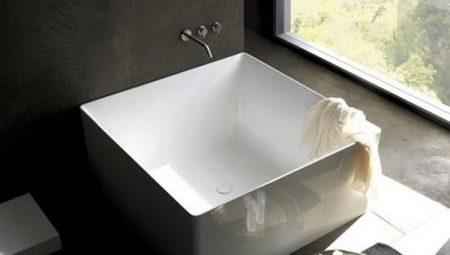The importance of a bathroom in household use is difficult to overestimate. And in it the square bathtub can take the most deserved dominant place. It is only necessary to know all the subtleties and nuances of this household item, to take into account the features of its application.
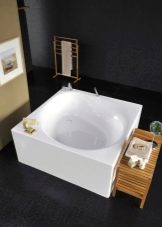
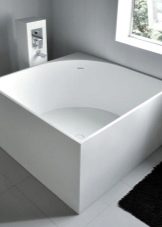
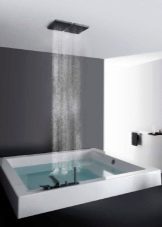
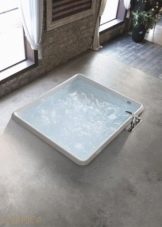
Features and materials
A square-shaped bathtub immediately reveals the creative design of the designers. This solution allows emphasizing originality and following the latest fashion trends. Such designs can be made of different materials:
- acrylic;
- become;
- cast iron.
Cast-iron modifications are distinguished by a large mechanical strength and are used for a long time. But their heavy weight complicates both installation and subsequent maintenance, elimination of accidents on communications. Steel turns out to be somewhat lighter, but a strong noise appears when the surface is touched by a jet of water.
Therefore, acrylic square bathtubs are the best choice in terms of practicality.
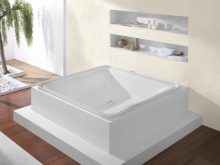
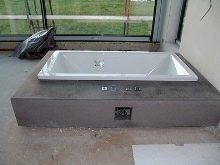
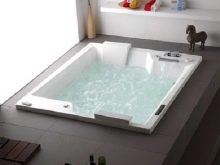
However, acrylic can belong to different categories. Often there is a "combination plastic", abbreviated as "PMMA + ABS." The bottom line is that the bath consists of two layers. Acrylic is used only outside, and underneath it is another plastic that is not very resistant to water. Obvious weakness - if the outer layer is broken, the core quickly fails.
Another popular option is injection acrylic. This material is very mechanically resistant and little susceptible to deformation. As for the extrusion type, it is characterized by a lower strength of molecular bonds than in the "cast" version. But the cost of the purchase will be slightly less.
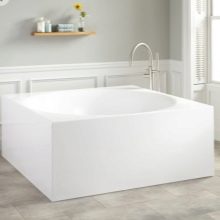
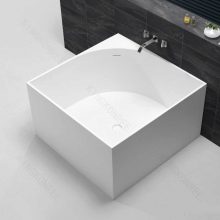
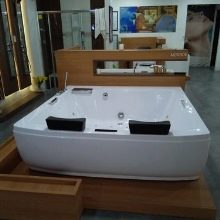
There are a number of reasons because of which it is appropriate to choose acrylic:
- it conducts heat fairly little;
- in spite of smoothness, the surface will not slip;
- when pouring water from the tap, no noise is heard;
- a bathtub of any size can be easily made at the discretion of designers and customers;
- the material has a nice glossy look;
- Acrylic does not contain pores that could clog.
But this does not mean that acrylic designs are completely free from flaws. They do not allow the use of powders and other cleaning compositions with an abrasive effect. Strong solvents can also adversely affect synthetic materials. And even if its strength does not weaken, but the gloss of the surface will be largely lost.
In addition, the smooth outer layer is prone to scratches and other defects.
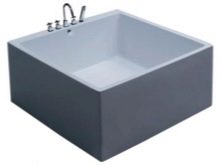
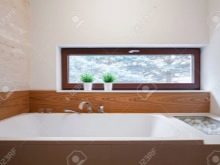
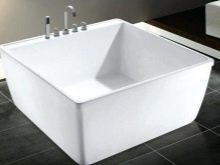
An acrylic bathtub can also deform under the influence of heavy objects. And sometimes not too heavy, but having metal parts of the surface. It would also be inadvisable to soak colored garments in an acrylic bathtub or to pour out the water left after their manual washing. This will almost inevitably lead to surface contamination with appropriate dyes.
Important: when choosing a specific acrylic bath, you need to make sure that it consists of a sufficient number of layers, and that there are no unpleasant odors.
You can also mention such exotic options for square designs, such as made of:
- concrete;
- a tree;
- natural stone.
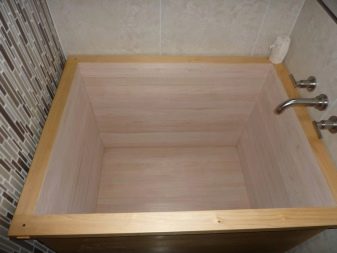

Dimensions
Of course, a bathtub measuring 80x80 or 90x90 cm is only useful for bathing the smallest children. For older children, sizes 100x100 and 120x120 are suitable. In adolescence, models 130x130 and 140x140 cm are suitable. The latter option, as well as 150x150 cm and more, is useful for most adults.
It is also necessary to pay attention to the depth of the structure. When it is more than 0.5-0.6 m, there is a great risk of accidental diving with the head. The width of the bathing accessory is determined by its own shoulder width.
It is important to distinguish between the dimensions of the bath body itself and its bowl. The inner container in a square product can have any shape, limited only by the imagination of customers.
To maintain the required distance between the floor and the drain, legs are used.
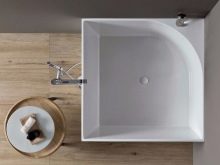
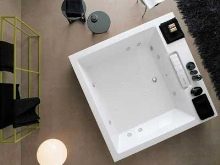

Kinds
The square bath can be built-in or attached. Embedding It is considered an attractive option, but it is mainly used in private homes. Mortise plumbing models are placed either in a recess in the floor, or on a pedestal equal to the height of the bathing tank itself. Obviously, in an apartment building it is extremely rare to do both without interfering with the supporting structures. And the matter is not only in technical problems, but also in the need to obtain official permission, which may not be given.
Side baths are used much more often. In addition to ease of installation, they also attract attention by saving useful space. It is allowed to use both legs and finished bases. In the second case, putting the “font” in the space allotted for it will be easier. If there is free space, you can use separately installed square bathtubs.

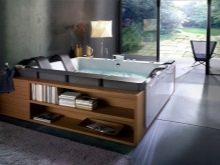
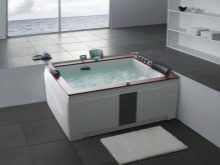
Returning briefly to the materials, it is worth noting that Acrylic is divided into industrial and plumbing types. The second option is preferable because it contains a number of additives that reduce the risk of microorganisms. This material is used by any self-respecting bath manufacturer.
The thickness of the used acrylic is of no small importance. If it is 0.5-0.6 cm, then a very long service is guaranteed even in difficult conditions.
However, the molding of such thick sheets is difficult even when using the most modern equipment.
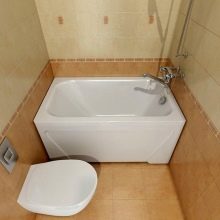
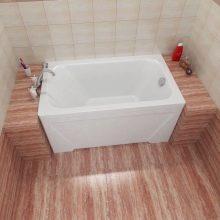
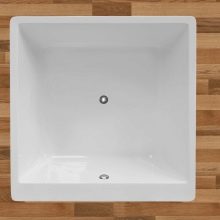
Additional items
To increase user comfort, apply:
- head restraints;
- curtains;
- built-in backlight;
- a number of other accessories.
To create curtains, soft materials (nylon or polyethylene) and hard materials (PVC, other plastics, glass) can also be used.The role of the curtain is not limited to improving the appearance - thanks to them, the floor covering and the rest of the room are protected from water splashes.
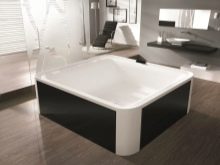
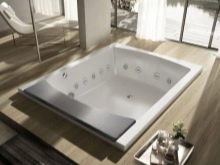
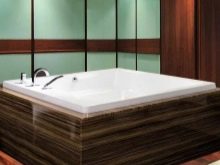
How to choose?
Designer models with an original look are often made from relatively thin extrusion acrylic. Sometimes it is used together with ABS plastics. On practical qualities, such an innovation is reflected little, but it allows you to guarantee the best price. But products from extrusion and combined acrylic can last a maximum of 3-5 years, then they will need to be changed.
In appearance, even an experienced specialist will not determine where the "casting", and where the "extrusion".
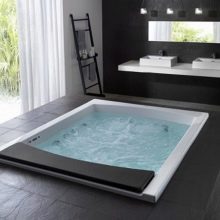
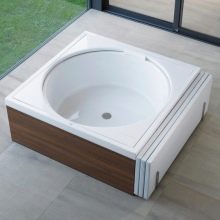
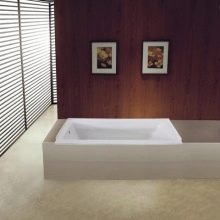
Therefore, it is very important to require hygiene certificates for the purchased goods. If the seller is not ready to provide them immediately, it is better to completely refrain from buying from him. It is advisable to look at the clearance - high-quality bathtubs do not allow visible light to pass completely. If this test is successful, you need to test the bottom. With the permission of the seller, they get inside and stomp in one place or just crush firmly with their hand.
The bottom should not bend. If this happens, no doubt - soon the bath will be covered with a grid of cracks. From the inside, the bottom should have clearly visible roughness. They prevent slipping of body parts even in water with a large amount of soap.
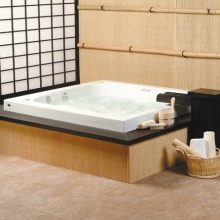
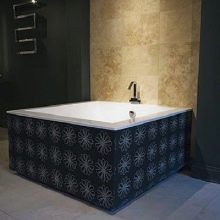
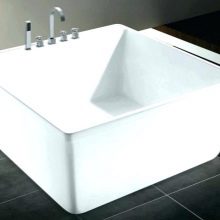
You also need to look at the sides of the bathtubs. If irregularities, even the smallest ones, are noticeable in the light of a flashlight, one can confidently say that acrylic is extremely thin. When you touch the side walls in the middle part, you can find out if they bend or not. Of course deflection indicates a gross violation of technological standards.
Only two layers should be visible at the cut of the bath. If there are more of them, then the use of plastic reinforcement is evident, which is designed to hide the low quality of the product as a whole.
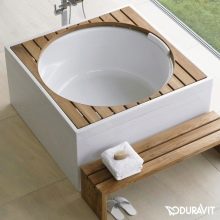
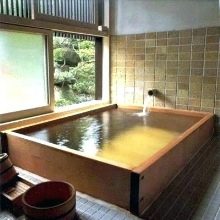
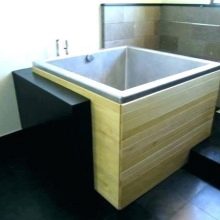
It makes almost no sense to purchase acrylic bathtubs of Russian and Chinese manufacturers. They use mostly low quality material. Such acrylic will last only until the first serious scratch, and then it will need to be thrown away due to complete unsuitability for repair. Of course, in the case of cast iron, steel or wood, Russian and Chinese goods are no worse than those delivered from Europe and the United States.
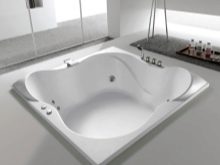
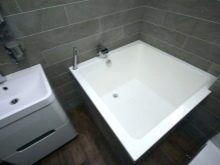
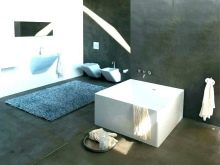
For tips on choosing a bath, see the next video.
